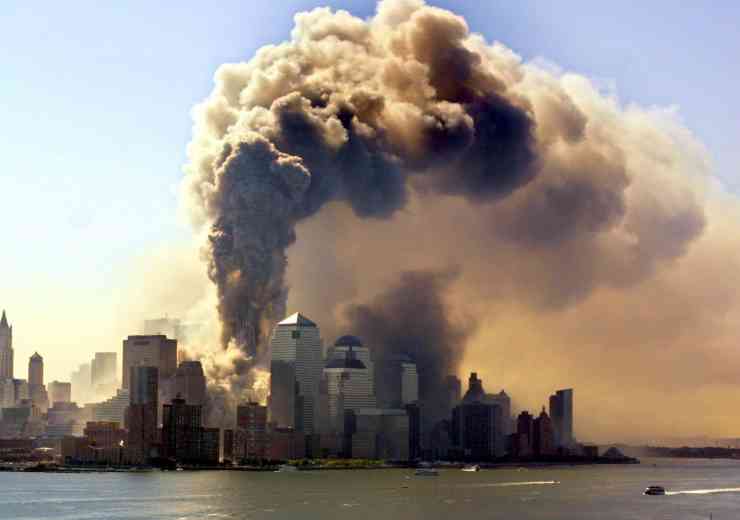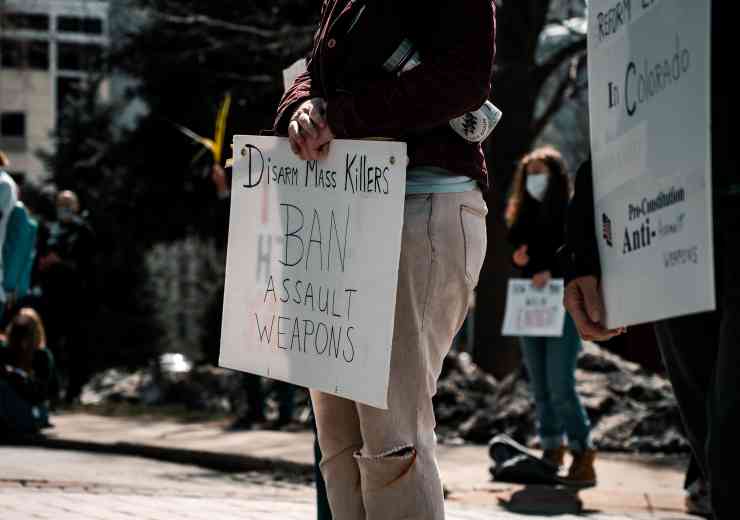
The unpredictability of the long anticipated attack
On 22 March Khalid Masood launched an individual attack outside the Houses of Parliament in London, killing and injuring by driving his car into pedestrians on Westminster Bridge. Having long held a ‘severe’ terrorist threat level, how prepared was London for the attack?
Events in recent years on mainland European soil have kept London’s terror alert at ‘severe’, meaning that an attack is highly likely. Ever since the November 2015 terrorist attacks in Paris, which brutally killed 130 people across the French capital in coordinated attacks outside the Stade de France and the Bataclan Theatre, the UK has been preparing itself for a similar attack on British soil.
At 14:40 on 22 March, 52-year-old Briton Khalid Masood, drove a hired Hyundai Tucson into pedestrians on the pavement along the south side of Westminster Bridge and Bridge Street, injuring more than 50 people, three of them fatally. Having crashed into railings at the north perimeter of the Palace of Westminster, Masood entered Parliament Square and stabbed PC Keith Palmer, an unarmed police officer on patrol as the House of Commons sat for its weekly Prime Minister’s Questions session. Lasting only 82 seconds, the attack was finished as Masood was shot, pronounced dead at hospital despite efforts to resuscitate him.
Following the attack, Mayor of London Sadiq Khan said: “I want to express my gratitude on behalf of all Londoners to the police and emergency services who have shown tremendous bravery in exceptionally difficult circumstances.
“I want to reassure all Londoners and all our visitors not to be alarmed - our city remains one of the safest in the world. London is the greatest city in the world and we stand together in the face of those who seek to harm us and destroy our way of life. We always have, and we always will. Londoners will never be cowed by terrorism.”
Calculated or unplanned?
While there is no intention to detract sympathy or do a disservice to the families of those affected by Masood’s actions last month, it is necessary to draw comparisons between the attack outside of Westminster, the heart of British politics, and the attack on Paris just under two years ago. In the days after 13 November 2015 it became clear that Abdelhamid Abaaoud, the suspected leader of the Paris attacks who disappeared from the scene and escaped police detection for five days following the attacks, was a known person of interest for European security authorities, having spent time becoming radicalised and trained in terrorism in Syria and with an international arrest warrant on his head. While there are many other European-born radicals who have travelled to Syria to joint ISIS, the links between Abaaoud and Syria are crucial for determining the collaborative nature and advanced planning that formed part of the Paris attacks.
Metropolitan Police acting deputy commissioner Mark Rowley revealed weeks before the Westminster attack that the UK security services had prevented 13 potential terror attacks on the country since June 2013, and that there were a further 500 counter terrorism investigations live at any one time. This is where the distinction between Masood and Abaaoud are important - Abaaoud became the figurehead for a calculated, carefully considered attack, planned well in advance of the attack date. Massed, as a police spokesman announced shortly after 22 March, ‘acted alone and was inspired by international terrorism’. In a detailed breakdown of events on 25 March, the Metropolitan police said that they had so far failed to establish the reason for the attack, concluding that Masood was possibly prompted by ISIS propaganda, but that there was no ‘information or intelligence to suggest there are further attacks planned’.
That Masood was inspired by international terrorism is undoubted. The method of attack, primarily using a large, fast moving vehicle to mow down pedestrians, is reminiscent of attacks in Nice in July last year and Berlin in late December, where 87 and 12 people were killed respectively. What is less obvious is how, beyond the similar technique, lies a more worrying resemblance - that being the adoption of low-tech terror.
With a number of larger scale terror plots having been foiled in the last few years, there is little denying that lone terrorist attacks, and particularly those using low-tech weaponry, are often those which do maximum harm as there is very little to monitor and prepare for incidents. As a result of this, the government’s counter terrorism strategy becomes even more important, aiming not only to prevent attacks, but also to minimise the impact when one happens. The government and police forces have longer used the phrase ‘when an attack happens’ when referring to a terrorist incident, rather than the more vague, but less accurate ‘if’.
Writing in The Guardian, Emily Winterbotham, senior research fellow at the Royal United Services Institute, summarised that ‘the increased tendency to employ easily accessible, low-cost, unsophisticated methods to inflict terror makes this job [the UK’s counter terrorism strategy] all the more difficult’. Prevent becomes the most important of the strategy’s four pillars, the others being pursue, prepare and protect. The response of London’s police force, discussed later in this article, stresses the success of the preparation aspect of the strategy, while the lockdown of Parliament emphasised the protect part of the work.
However, as the spread of low-tech attacks become more readily employed, not just to terrorist organisations but to all those desiring to inflict terror and devastation, the success of the prevent pillar may become the most important. Tackling radicalisation and exposure to terrorist propaganda is the key for safe communities. If our communities becomes exposed and we fail to prevent terrorism at its local roots, the protection of our towns and cities, our preparedness to respond and our ability to pursue extremism all become clouded in uncertainty and difficulty grows.
London’s preparedness report
A review carried out by Lord Harris of Haringey in October 2016 analysed London’s ability to deal with a terror attack, and consequently urged the Home Office to consider combining the Metropolitan Police, the City of London Police and the British Transport Police (BTP). Ordered by Sadiq Khan to examine and assess London’s security, the reports suggestions gained the approval of former Met Commissioner Sir Bernard Hogan-Howe, who agreed that the current policing set up in the capital was ‘confusing’. Hogan-Howe said that Harris' proposed merger would result in ‘improved operational effectiveness and that he thought that London would better respond to a terrorist incident if services worked together.
The recommendations included implementing: a London-wide pilot of technology where all phones are sent a message alerting of a major attack; increasing the number of firearms instructors so marksmen can be trained quicker; a comprehensive review of safety and security on the River Thames, commissioned by the mayor, to report by May 2017; and a review of the capacity of London's major trauma centres; bolster mental health services to support those at risk of radicalisation; security guards and bouncers should be trained to help prepare against an attack; there should be four dedicated 24/7 Hazardous Area Response Teams and a similar number of Mass Casualty Vehicles strategically located around London; and all London schools to have a plan for how to prepare for a terrorist attack.
Commenting on his report, Lord Harris said: "London needs to become a city where security and resilience is designed in and is part of the city’s fabric, and where everyone who lives and works here sees security and resilience as their responsibility just as much as it is for the emergency services and civic authorities."
Harris said that 'the quality and effectiveness of the work done by the intelligence agencies and counter terrorism police is amongst the best in the world', citing the immediate response to the knife attack incident in Russell Square last Summer as an example of the speed of response, which was recorded as lasting less than six minutes between the emergency control room being informed and the suspect being subdued. One can assume that Lord Harris would have been doubly impressed by the response times of the police and other emergency service departments last month. While there is potential for efficiency to be improved, and Lord Harris is right to suggest collaboration to enhance performance, he is also right to praise the work of our services and their bravery to date.
Rapid response to an untimely attack
Days before Masood’s attack, the Mayor of London launched a new policing plan for the capital, A Safer City for All Londoners, which, among a number of new measures to tackle local crime, included plans to boost the Metropolitan police’s armed anti-terror squad, so as to create a network of specialist firearms officers primed to ‘quickly and decisively’ react to a terror attack ‘should the need arise’.
Sadiq Khan emphasised that counter terrorism policing ‘begins with community policing, with dedicated officers who know and are known by there communities’. Addressing the possibility of an attack happening, the report sats that the Metropolitan Police needs the resources to respond rapidly and protect London. Therefore, the Mayor’s office agreed ‘an increase in armed officers for London’.
Acting deputy commissioner Mark Rowley said in the aftermath of the attack that this was the event that the Metropolitan Police and other security services had anticipated, planned for and hoped would never happen. As terrible as the loss of life has been, and it has been rightly and justly publicised in the press, it is worth remembering that this is the one attack that has managed to manifest itself among the dozens that have been prevented on UK shores. Furthermore, the speed and bravery of the security and emergency services, as well as the actions of ministers, notably foreign office minister Tobias Ellwood, should be heralded.
Days before the attack, the Metropolitan Police Service, along with emergency service partners, carried out the first joint major live-play exercise to test their response to a terrorist threat on the River Thames. ‘Exercise Anchor’ involved over 200 police officers and staff, and involved a scenario in which a group of terrorists hijacked a passenger pleasure boat on the Thames and took a number of hostages, with the intention of traveling up the Thames to to carry out a terrorist attack in Central London. With Counter Terrorism Specialist Firearms Officers for the process, it was intended to test the response and command and control protocols of emergency services, and proved a very timely exercise given what followed on 22 March. It enabled the response to be effectively well-rehearsed and reassuringly fast.
Parliamentarians, who were meeting for Prime Minister’s Questions were quickly put into lockdown, using social media platforms to inform the public of the instruction being presented to the, while the Prime Minister was driven away from the location. The roads surrounding Westminster were shut off, Westminster underground tube station emptied and Whitehall put in shutdown. As reporters who rushed to the scene will testify, it was impossible to get within 200 yards of the location, as police blocked roads and paths leading to the Houses of Parliament - the reaction was deservedly brilliant.
















